
Repairing the wheel arches
When you are faced with a body panel that is clearly showing years of wear and tear, sometimes, the most cost effective and reassuring way to


When you are faced with a body panel that is clearly showing years of wear and tear, sometimes, the most cost effective and reassuring way to
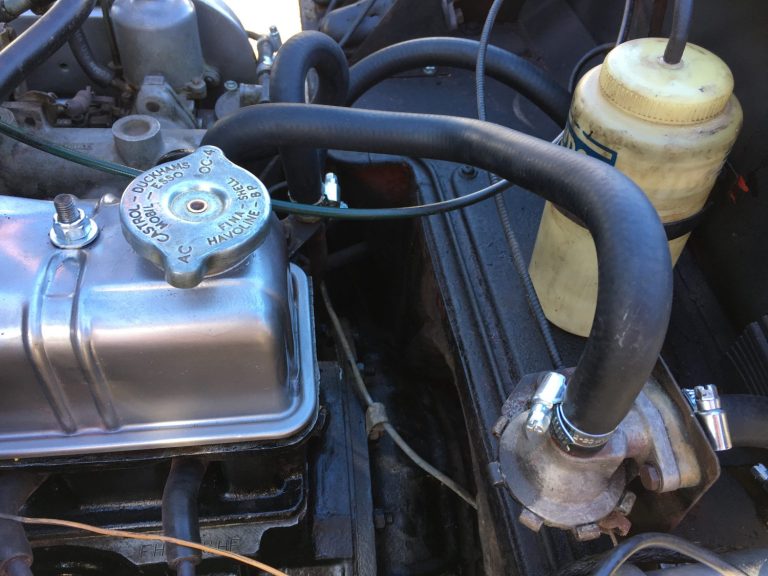
With the new hoses now with us in our workshops John got to work on fitting them up.
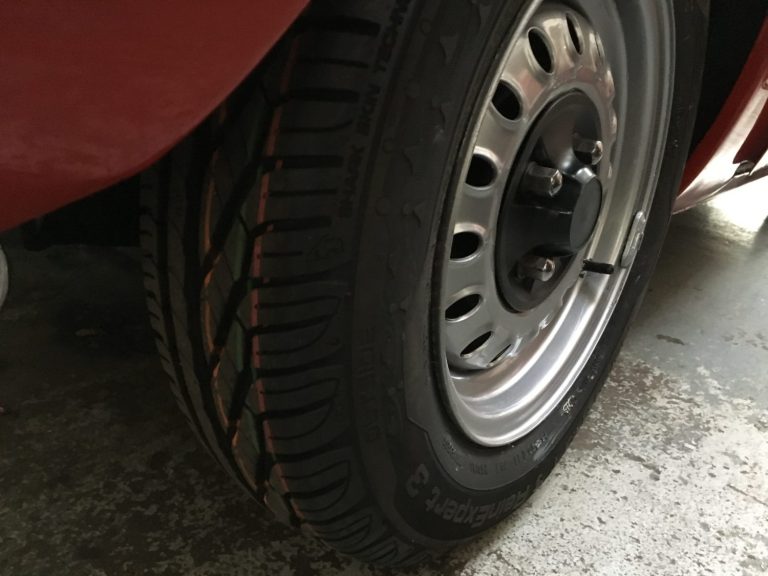
Fitted with a brand new pair of 156/80 R13 tyres on the rear, our little Spitfire is now complete. One final test drive and a
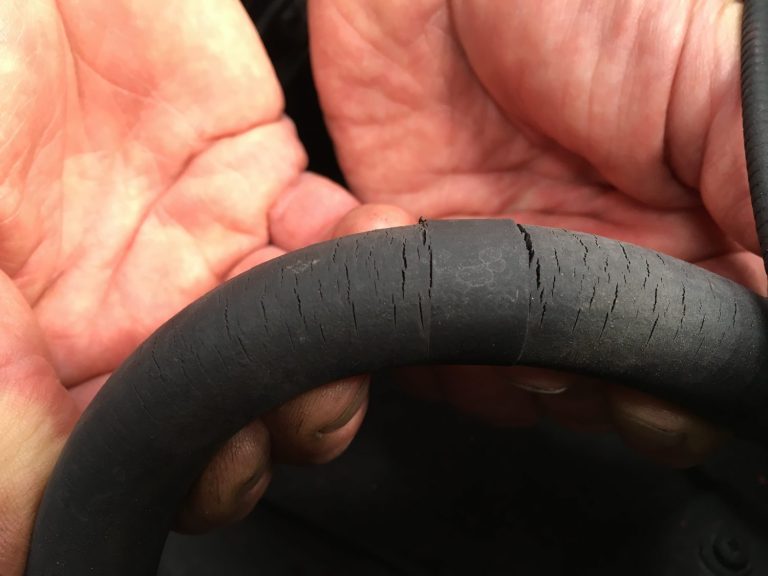
Age can often take it’s toll on the engine; upon further inspection, things that look and function perfectly fine can often be showing signs of
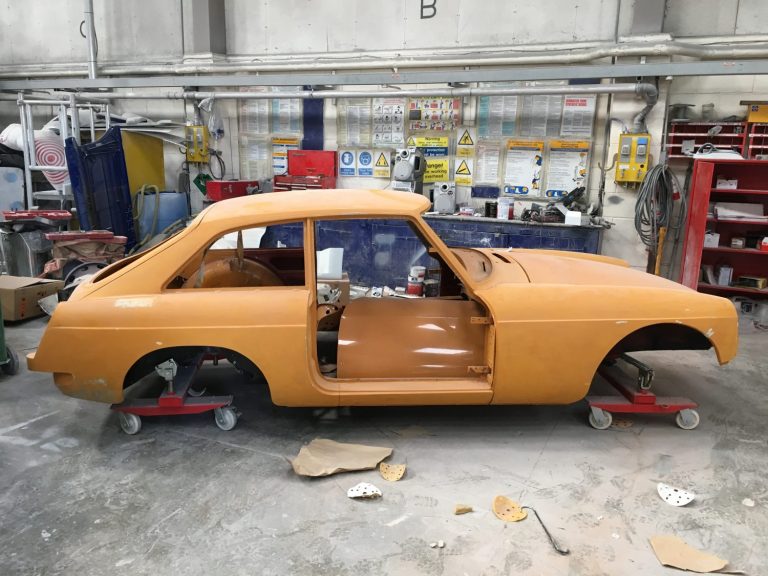
Work is well underway on preparing our 1968 MGBGT body shell ready for paint. Not a huge amount is required on the body shell as
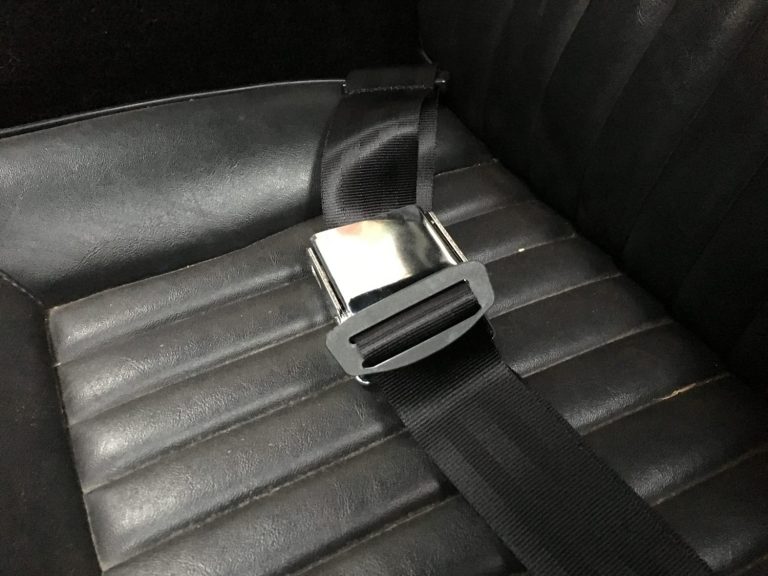
Thanks to the guys at Vintage Warehouse 65, our 1971 Triumph Spitfire is now fitted with brand new 3 point chrome buckled seat belts. Finished in
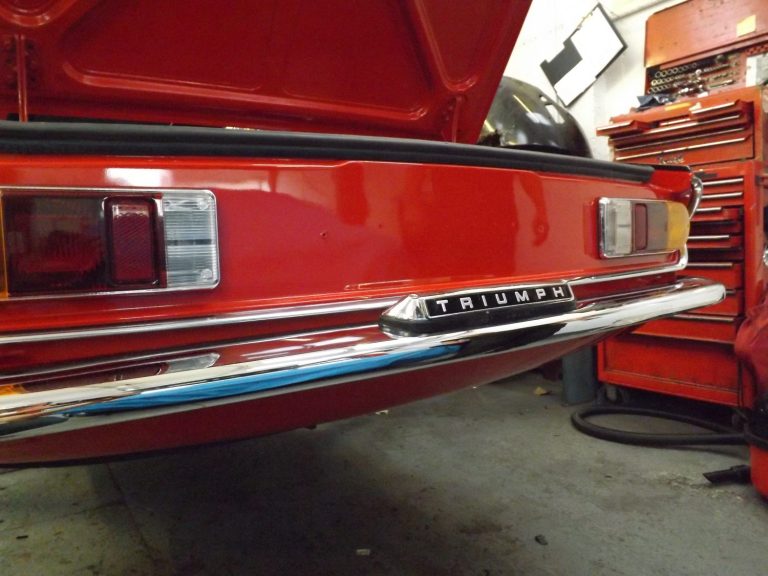
This is the fun part of a restoration; piece by piece, day by day the car starts to take shape. Everything has been cleaned up
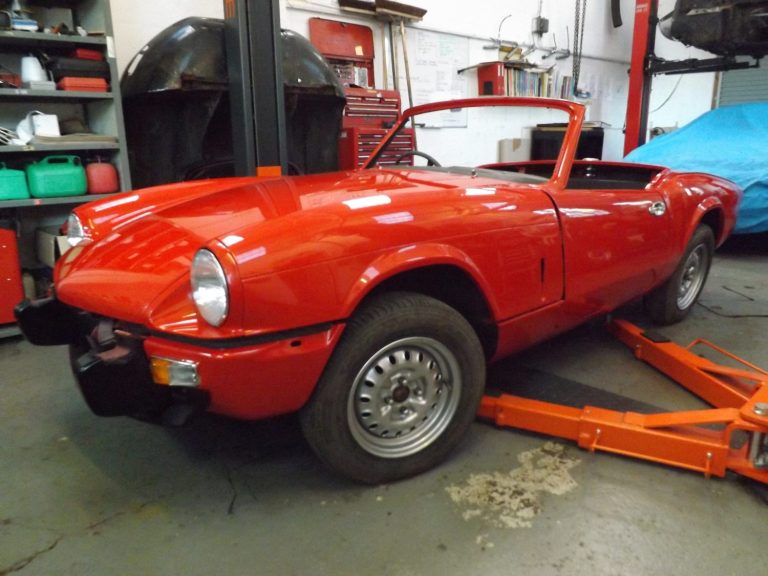
[vc_row][vc_column][vc_column_text]Been a busy day in the workshops today with our 1971 Triumph Spitfire arriving back from the paint shop looking gorgeous. With a shelf full
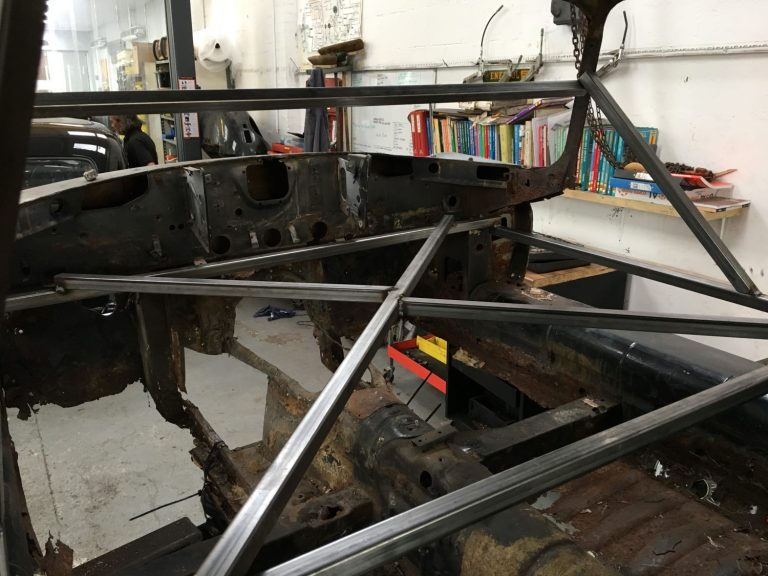
Our 1966 Jaguar E-Type shell is now completely stripped of all removable components. Before we can proceed with the blasting process or chemical immersion clean
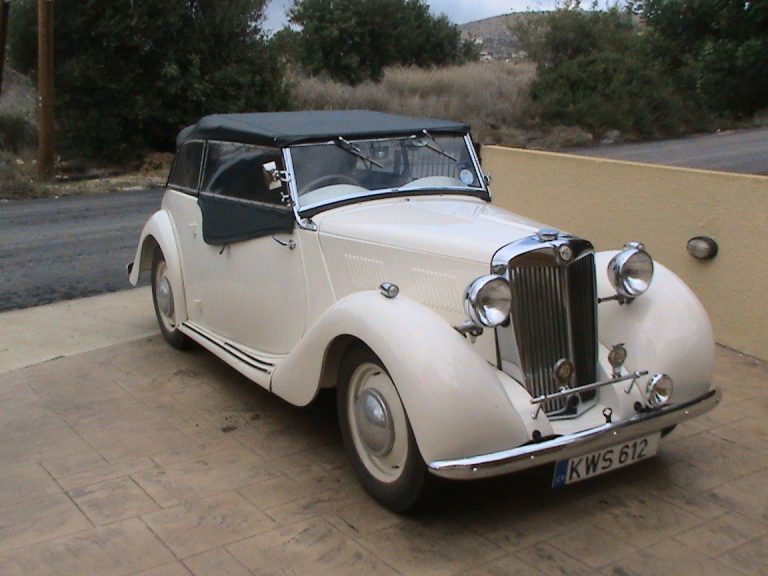
Wikipedia In 1948 several (currently believed to be 9) “YA” Types (consisting of chassis, engines and some body parts) were imported into Switzerland and given
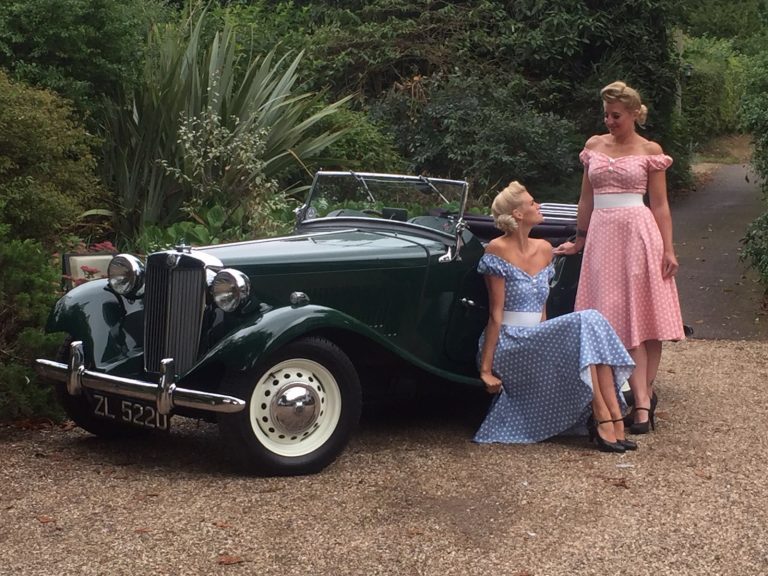
[vc_row][vc_column][vc_column_text]With our incredible 1951 MGTD Competition now complete there is only one thing left to do… A stunning Suffolk shoot! As this little beauty is
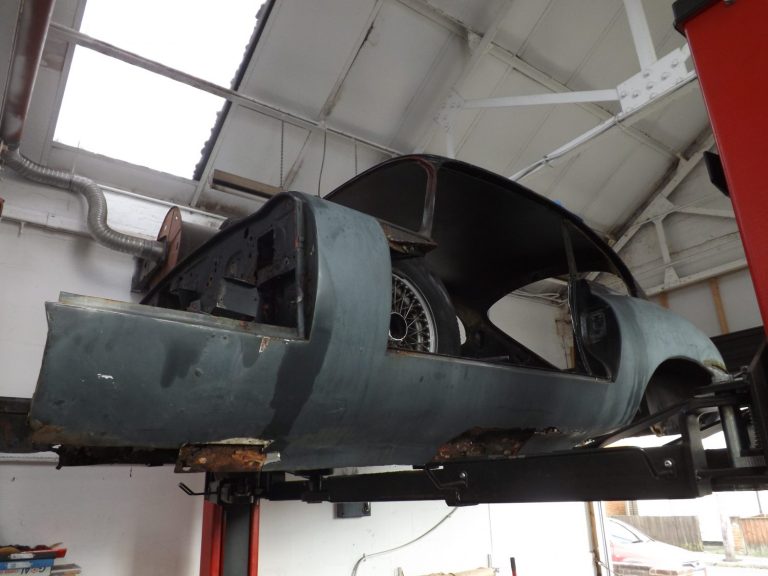
[vc_row][vc_column][vc_column_text]With the engine now running and removed, it’s time for the project to begin! And it didn’t take the team long to discover the enormity of
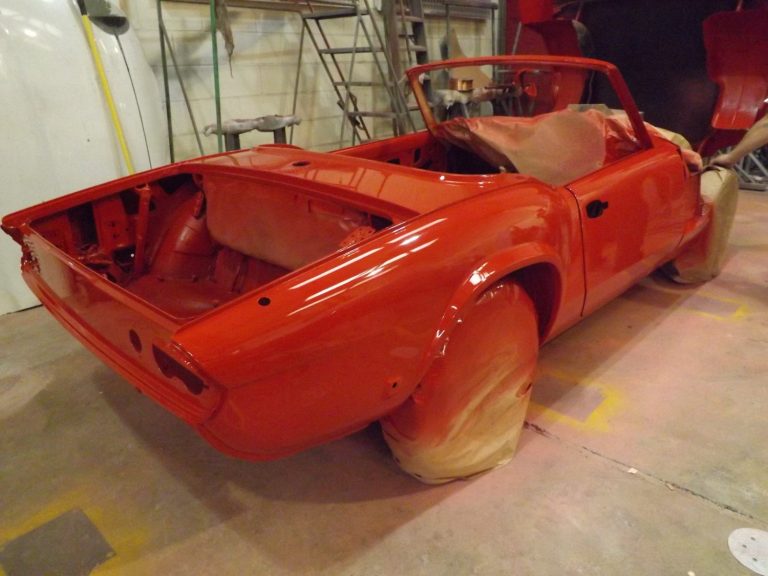
[vc_row][vc_column][vc_column_text]Here she is looking absolutely stunning with her new re-spray. Trevor worked late into the night and all day Saturday to ensure we have her
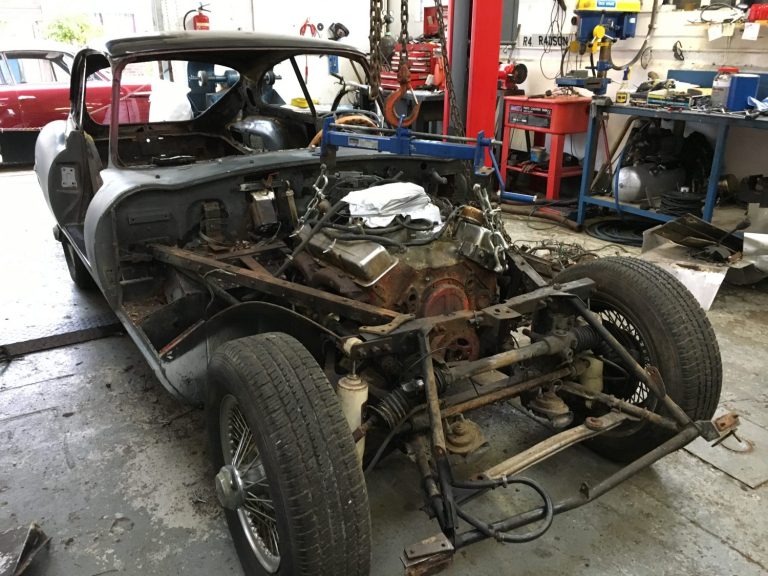
[vc_row][vc_column][vc_column_text]Worked is now well underway getting our 1967 Jaguar E-Type stripped bare ready for the bodywork repairs to be assessed.[/vc_column_text][/vc_column][/vc_row][vc_row][vc_column][vc_gallery type=”image_grid” images=”6613,6614,6615,6616,6617,6630,6631,6632,6633,6634,6608,6607,6606,6605,6604,6603,6602,6601,6600,6599,6598,6597,6596,6595,6594,6593,6592,6591″][/vc_column][/vc_row]
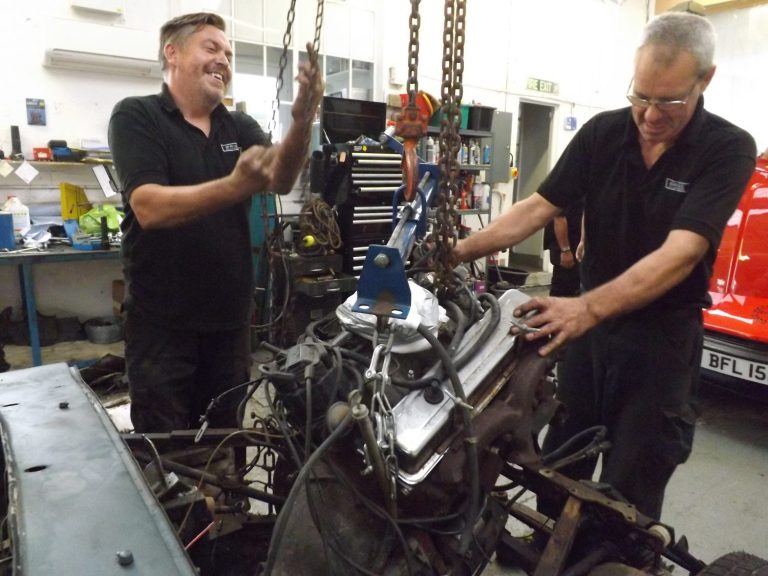
[vc_row][vc_column][vc_column_text]We are excited to announce that this week saw the start of our next big restoration project, our 1967 Jaguar E-Type Series 1. As John
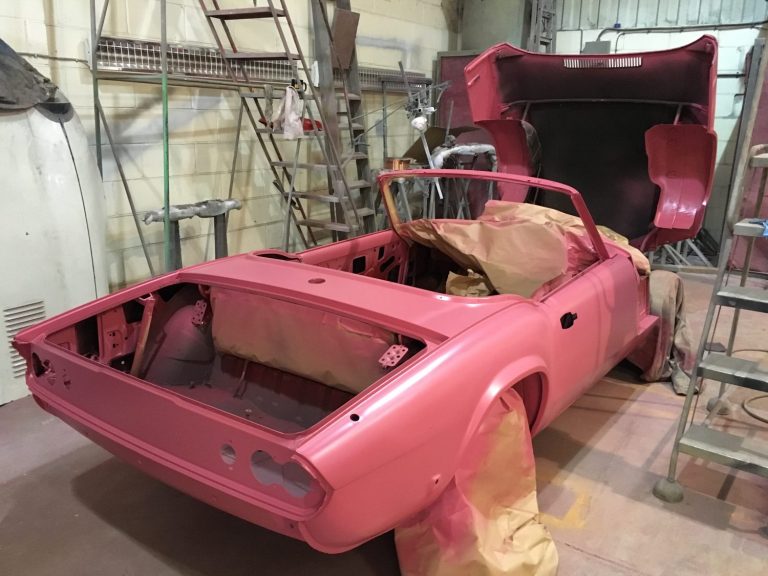
Mrs K, we decided your car would look pretty in pink! Hope you like… (haha don’t panic, it’s not, it’s primer) Was a bit of

Another amazing photoshoot by Jason at Sugar and Spice Photography scheduled in the next few weeks and this time we are adding a bit of sugar
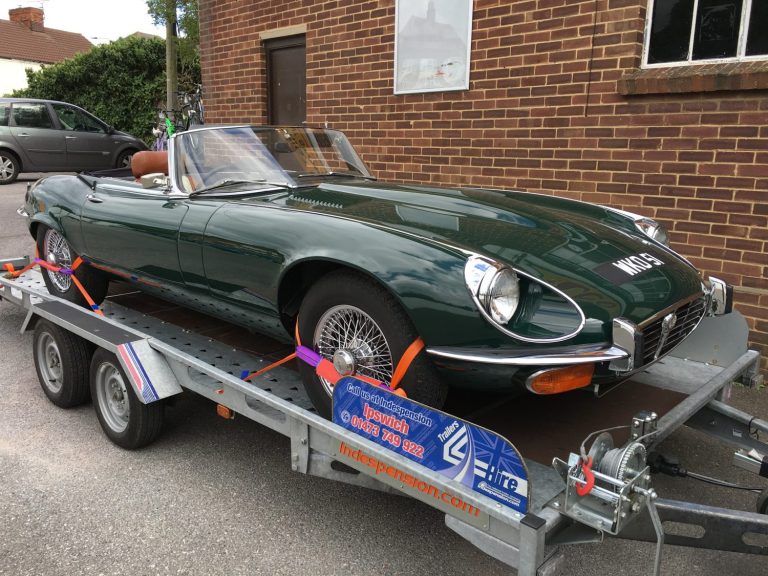
With the leaking master cylinder now replaced, the running problems have been resolved, all of the brakes have been bled and assessed and as mentioned

A trip down the A12 for Craig today as he takes the Triumph Spitfire interior to Bridge Classic Car’s upholsterer Kim. In a past life,
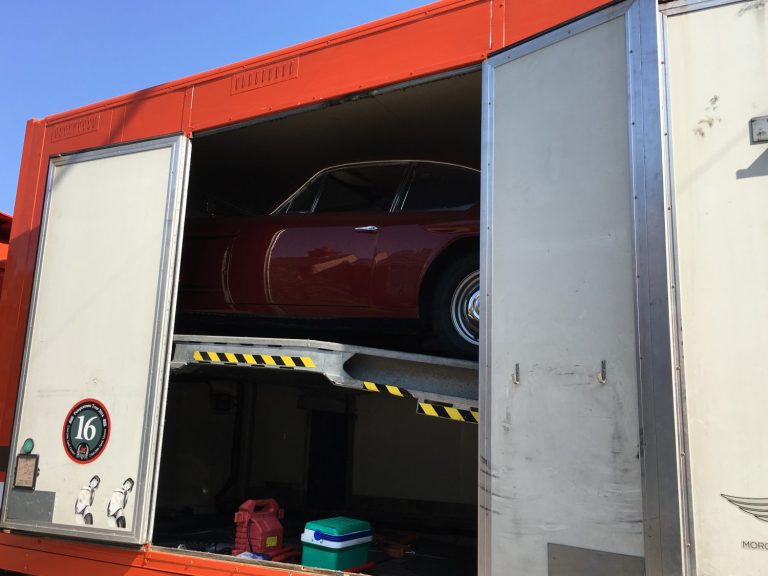
[vc_row][vc_column][vc_column_text] This car is the original Prototype 541S by Jensen Motors manufactured in 1960. There were only 3 prototypes made, two were manual geared and
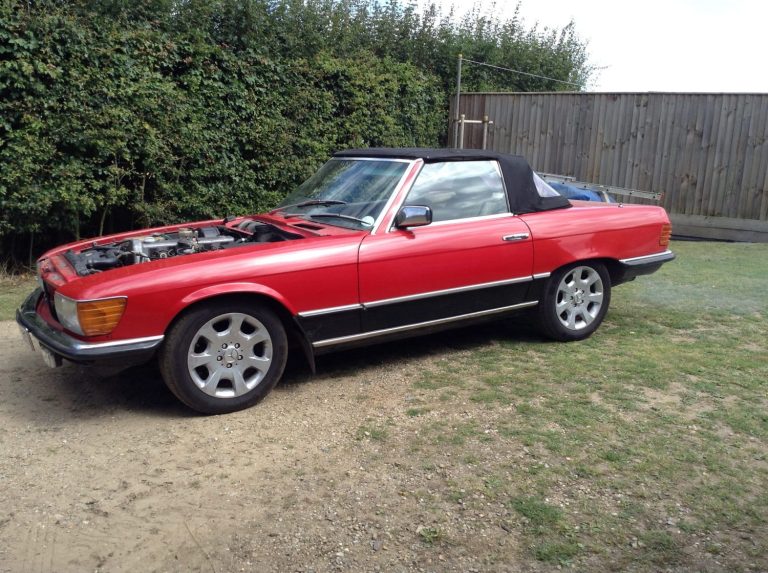
[vc_row][vc_column][vc_column_text]To quote a paragraph from the ‘About Us‘ section of our website: ‘Every single classic vehicle has a story; the motorbike that friends used to
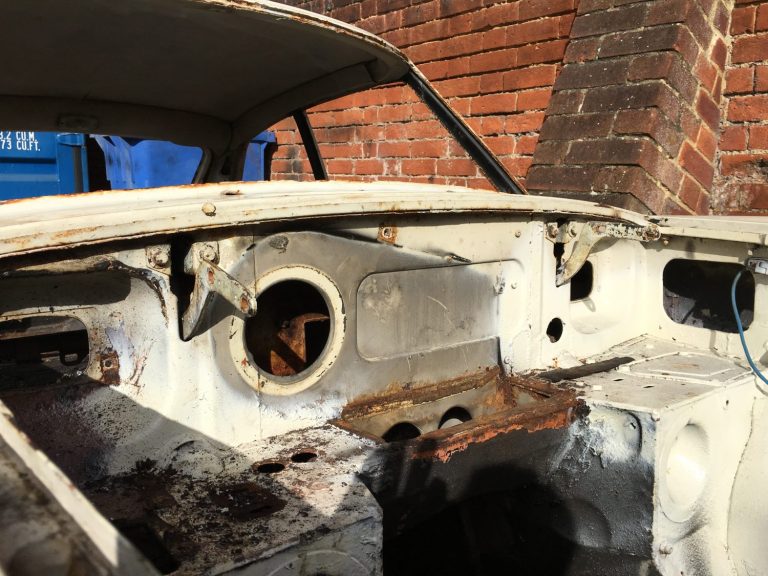
Here you can see the extent of work that is required on the existing body shell of our MGBGT. We are never put off by
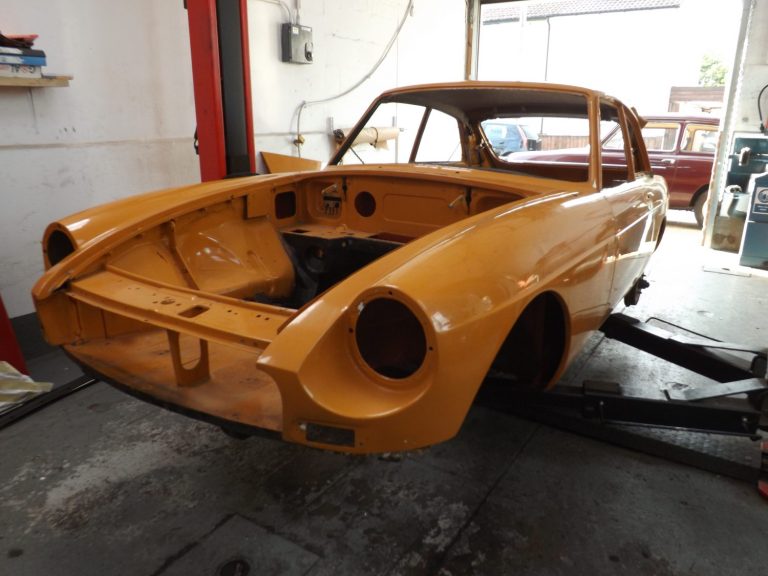
[vc_row][vc_column][vc_column_text]…and we were expecting to be carrying out a lot more remedial work than what is actually required on this one. Good news for us

She came in to us a little over 3 weeks ago for some routine maintenance. Since them the team has: Removed the alternator and bracket

So that’s it…she’s almost complete. The brand new double duck roof is now fitted and secure. We are just waiting back on the registration documentation
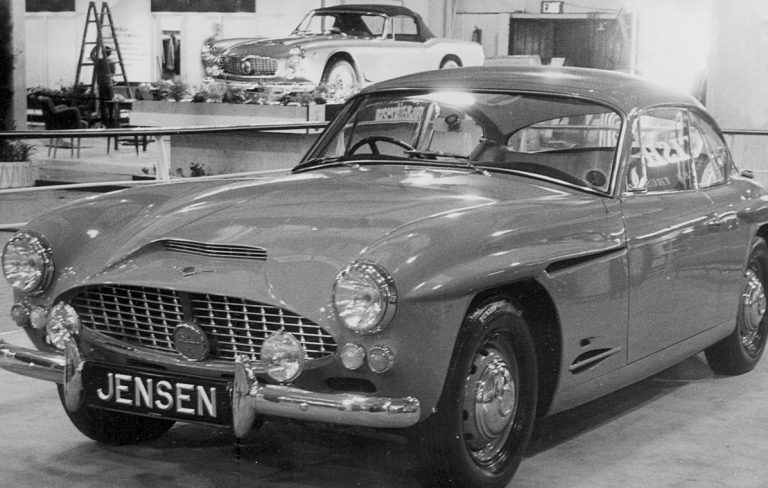
[vc_row][vc_column][vc_column_text]At the start of the 1950s the Jensen Motor Company had a financially sound business producing commercial vehicles and building bespoke bodies for other manufacturers.
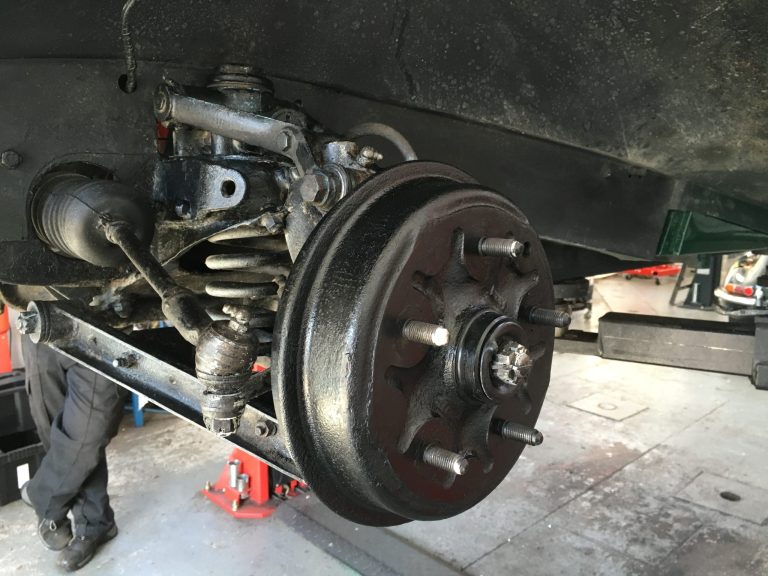
Bizarrely, it seemed somebody had decided to paint the wheels of our wonderful little MGTD whilst they were still on the car. We’ve been looking
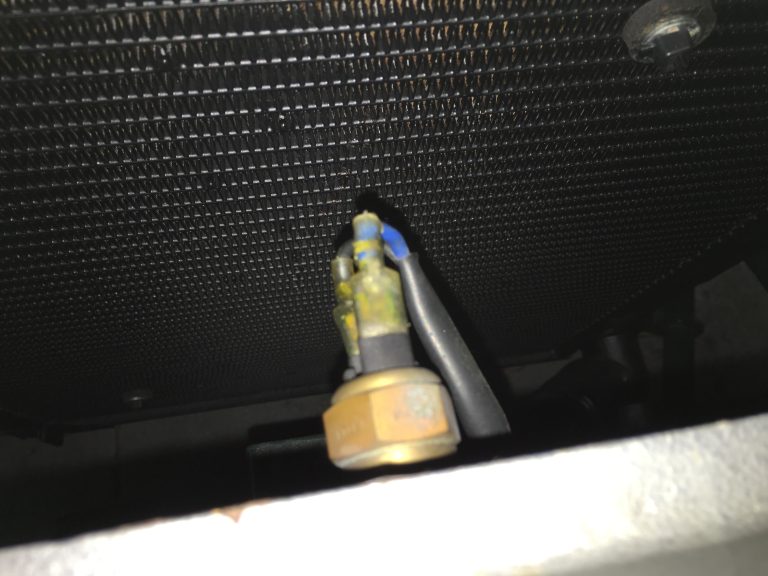
When running the car up to temperature we discovered a fault with the fan sensor. A new sensor has been ordered and will arrive with
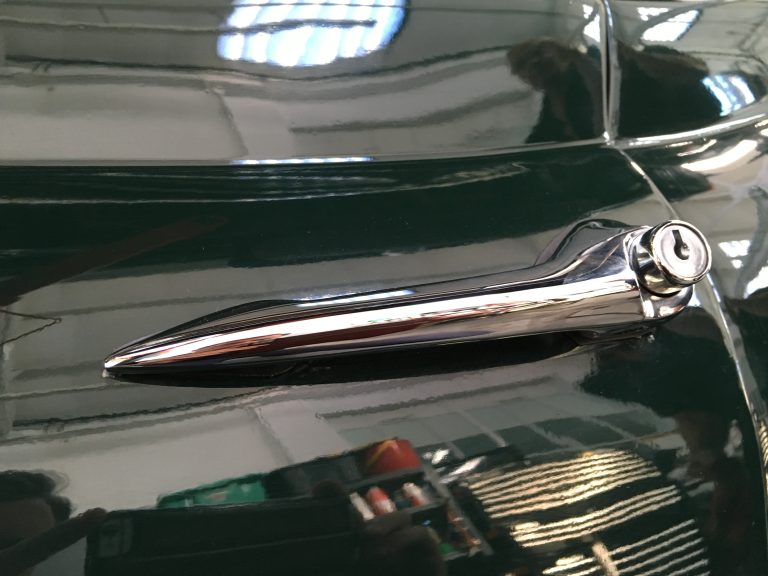
When it’s a gorgeous summer’s evening here in Suffolk there’s nothing better than taking out your beautiful 1965 Jaguar E-Type Series 1 for a drive.
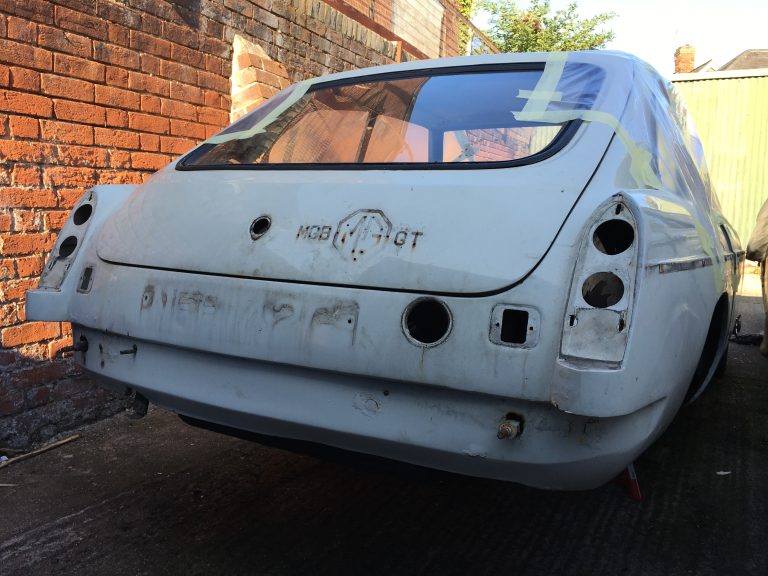
As we await the new old body shell that will be arriving at Bridge Classic Cars later this month, work got underway today on stripping and
When you are faced with a body panel that is clearly showing years of wear and tear, sometimes, the most cost effective and reassuring way to secure the longevity of the area is to replace the rotten panels with new.
As you can see, that is exactly what we have decided to do on our 1989 Volkswagen Camper T25. This way, Mrs L and the family can have years and years of happy driving knowing that the rust will not be creeping back in anytime soon…simply because it’s no longer there!!
With the new hoses now with us in our workshops John got to work on fitting them up.
Fitted with a brand new pair of 156/80 R13 tyres on the rear, our little Spitfire is now complete.
One final test drive and a thorough clean and she’ll be ready to go home!
Age can often take it’s toll on the engine; upon further inspection, things that look and function perfectly fine can often be showing signs of wear and tear.
Take the cooling hoses for example. The engine runs and functions as you’d expect but as you’ll see from the images they can be just a fraction away from causing longer lasting damage.
Here is one of the hoses from our 1971 Triumph Spitfire.
Another one of the hoses had lost its flexibility entirely, this is not a good sign. When rubber no longer flexes it is time to renew. What makes this example worse is that the tube has expanded too.
Work is well underway on preparing our 1968 MGBGT body shell ready for paint.
Not a huge amount is required on the body shell as it arrived to us in very good condition.
By the end of this week we should see her finished in Snowberry White.
Thanks to the guys at Vintage Warehouse 65, our 1971 Triumph Spitfire is now fitted with brand new 3 point chrome buckled seat belts.
Finished in black with chrome buckles they compliment the interior of the car very well and the 3 point option keeps in with the authenticity of the vehicle.
This is the fun part of a restoration; piece by piece, day by day the car starts to take shape. Everything has been cleaned up and all looking fresh and shiny.
Today Asa, John and Mark have all been getting stuck in to our 1971 Triumph Spitfire rebuild.
If you’d been running around for 45 years you’d too probably start to look a little tired and that’s exactly what we found under the bonnet, a tired looking engine.
Mechanically, she run’s like a dream but after a little bit of cleaning and painting in places she also looks wonderful too.
We have resprayed underneath the bonnet and arches with a very hard wearing coating. Being finished in black really finishes it off. Not only does it look great but is a useful technique to help hide any future dirty and grime that starts to build.
Today, we also resprayed the newly refurbished shocks, springs and discs. It’s the smaller detail that makes a big difference to the overall appearance. Why spend all this time and effort on a fantastic outer body and then leave the smaller visible components thinking that they are not worth doing…everything is worth doing!!
Moving on to the interior, John has been busy fitting the brand new Triumph Spitfire door cards.
Speaking from experience, if you are restoring your own classic vehicle and your door cards look perfectly fine then please do not be too hasty at deciding to keep them. We very rarely have cars come in to us with horrible door cards. Door cards are more option that not still in good working order but when you have gone to all the effort stripping, respraying and rebuilding, the door cards you thought looked perfectly fine will most probably look tired next to a freshly painted exterior.
It’s absolutely worth that extra thought…
Here we are nearing the end of the day; the brand new handles have been fitted, the rear chrome surround trim is also in place, the rear lights are looking lovely and one of the rear black strips is also in position.
Soon be time to head home, get a good night’s sleeps so we can crack on for day 3 of the rebuild. Before the team leave off for the night we refitted the original chrome bumpers and badges.
The refurbished chrome bumpers have come up like new..but the great thing is that they are all original. This was one objective that Mrs King was really hoping we could achieve, from day 1 the original bumpers were always the preferred choice over a set of new and we couldn’t have asked for a better result.
[vc_row][vc_column][vc_column_text]Been a busy day in the workshops today with our 1971 Triumph Spitfire arriving back from the paint shop looking gorgeous.
With a shelf full of new, polished and re-chromed parts Asa, Mark and John have been hard at work re-fitting her back up, getting her ready to be back on the road.
The brand new light fittings have been positioned, the door handles are back in play and the rear chrome strips have been added to.
We’ve kept the original bumpers but have had them re-chromed and polished. They will be arriving with us tomorrow, thanks to Tony and the guys at Wyatt Polishing in Thetford for working hard on them for us. Sometimes cost plays a big role in whether to keep original parts or opt for brand new. As much as brand new is lovely and is often the cheapest option, where we can rescue the original parts for a reasonable price we will do that.
In this case, the bumpers have been restored which is a fantastic result![/vc_column_text][/vc_column][/vc_row][vc_row][vc_column][vc_gallery type=”image_grid” images=”6781,6782,6783,6784,6785,6786,6787,6788,6789,6790″][/vc_column][/vc_row]
Our 1966 Jaguar E-Type shell is now completely stripped of all removable components. Before we can proceed with the blasting process or chemical immersion clean we firstly need to strengthen the frail body shell to prevent any further weakness’ appearing.
The cleaning process is a fantastic method for removing all debris, rust, dirt and any fillers that have been applied to the vehicle over it’s lifetime. As the process is very tough and our body shell is relative weak in it’s current state Asa has built a bespoke strengthening frame that he has attached internally to the shell. This will prevent any weakness’ getting any worse.
In 1948 several (currently believed to be 9) “YA” Types (consisting of chassis, engines and some body parts) were imported into Switzerland and given cabriolet bodywork by various coachbuilders, such as Reinbolt & Christé. The idea of the open four-seat tourer had been popular before the war, and in theory there was still a market. As a result a “TC” specification of the XPAG engine was married to a pressed-steel open body with fully folding hood and coach-built doors.
A production tourer, the MG “YT”, was launched at the Motor Show in 1948. It was available for export only in both right- and left-hand-drive models. Only 877 of these cars were produced when production ceased in 1950—it was not the success that MG had hoped for, and indeed other British manufacturers were also having problems selling open-tourer versions of their saloons.
The “YT” Tourer did not benefit from ‘displayed’ woodwork but had the same standard of seat trim. It did have more instrumentation, in that there was a tachometer (or rev counter) in front of the driver, the speedometer was positioned in front of the passenger with a central bank of subsidiary dials in the centre, giving a similar sporting appearance to the TC with a “double scuttle” dash.
A childhood dream for Mr MacDonald to own one of the 877 that were produced.
This incredible MG Y Type is due to leave Cyprus this Friday and after a few weeks at sea she’ll be arriving in Felixstowe before being delivered directly to our Ipswich workshops for assessment.
At Bridge Classic Cars we offer anything that your classic car desires.
We’ll give this wonderful little MG a fully check over and along with it’s new owner, we’ll decide on the best course of action to get her up and running.
In no time at all she’ll be out and about for all to see and enjoy.
[vc_row][vc_column][vc_column_text]With our incredible 1951 MGTD Competition now complete there is only one thing left to do…
A stunning Suffolk shoot!
As this little beauty is believed to be the only one left in the world it was only right for her to have a very special Suffolk shoot.
Firstly, we must say a huge thank you to Cyndy at Priory Hall in Hadleigh, a truly stunning setting and so accommodating. Thank you also for showing us your lovely MG, (just let me know when you’re ready to get her back on the road and we’ll take care of her for you.)
Here are some ‘behind the scenes’ photos taken by the non professional (Craig) on the non professional device (phone).
“I’m sure you’ll agree, these are by far the best photos of the day. I mean a photo of a photo on a camera, so artistic!!”
Here’s Hayley and Lauren from 1940’s Harmony trio The Bombshells, looking absolutely gorgeous in the car.
[/vc_column_text][/vc_column][/vc_row][vc_row][vc_column][vc_gallery type=”image_grid” images=”6686,6687,6688,6689,6690,6691,6692,6693,6694,6695,6696,6697,6698,6699,6700,6701,6685,6718,6717,6716,6715,6714″][/vc_column][/vc_row][vc_row][vc_column][vc_text_separator title=”The Bombshells from Halo Entertainment”][/vc_column][/vc_row][vc_row][vc_column][vc_column_text]
‘The Bombshells’ offer a fantastic nights worth of entertainment, featuring all time classics from a time a gone by. They recreate musical history with their incredible harmonies, similar to the Andrew’s Sisters. With this Trio you should expect full live vocals accompanied with their fun loving, bubbly personalities, which will only make you want to move your feet. Bringing old time classic songs from the 1940’s and present day hits in the boogie woogie style, makes The Bombshells perfect for all ages. The easy listening nature to their selected songs makes this trio perfect for a range of venues and style of events.
With such a buzz around this act, you need to get the bookings in fast, so not be disappointed! Click here for more information, videos, photos and contact details.[/vc_column_text][/vc_column][/vc_row][vc_row][vc_column][vc_separator][/vc_column][/vc_row][vc_row][vc_column][vc_column_text]Just a few more days until we see the wonderful creations that photographer Jason from Sugar and Spice Photography in Felixstowe has put together for us…[/vc_column_text][/vc_column][/vc_row]
[vc_row][vc_column][vc_column_text]With the engine now running and removed, it’s time for the project to begin!
And it didn’t take the team long to discover the enormity of the task in hand. Our black 1967 Jaguar E-Type Series 1 is, without a doubt, one of our biggest projects to date.
But what a fantastically busy day we’ve had.
The car is well into being stripped, the axles have been removed ready to be stripped and we’ll soon be ready for Asa to step in to assess the bodywork, remove as much of the body waste as possible and get her ready for sandblasting.[/vc_column_text][/vc_column][/vc_row][vc_row][vc_column][vc_gallery type=”image_grid” images=”6727,6728,6729,6730,6731,6732,6733,6734,6735,6736,6737,6738,6739,6740,6741,6742,6743,6744,6745,6746,6747″][/vc_column][/vc_row]
[vc_row][vc_column][vc_column_text]Here she is looking absolutely stunning with her new re-spray.
Trevor worked late into the night and all day Saturday to ensure we have her back at the beginning of next week. Sometimes, due to unforeseen circumstances projects and tasks over-run. We have a very solid record of managing our time and budgets on restorations but unfortunately due to holidays we are a few days behind on this one.
…it’ll be worth it though!
What a huge transformation to this little gem. All that’s left to do is the refurbishment of the wheels and then back she comes to our Ipswich workshop be re-fitted.
[/vc_column_text][/vc_column][/vc_row][vc_row][vc_column][vc_gallery type=”image_grid” images=”6670,6671,6672,6673,6674,6675,6676,6677,6678,6679,6680,6681″][/vc_column][/vc_row]
[vc_row][vc_column][vc_column_text]Worked is now well underway getting our 1967 Jaguar E-Type stripped bare ready for the bodywork repairs to be assessed.[/vc_column_text][/vc_column][/vc_row][vc_row][vc_column][vc_gallery type=”image_grid” images=”6613,6614,6615,6616,6617,6630,6631,6632,6633,6634,6608,6607,6606,6605,6604,6603,6602,6601,6600,6599,6598,6597,6596,6595,6594,6593,6592,6591″][/vc_column][/vc_row]
[vc_row][vc_column][vc_column_text]We are excited to announce that this week saw the start of our next big restoration project, our 1967 Jaguar E-Type Series 1.
As John was busy stripping the E-Type bare, our engine man Mark decided to see whether he could get it running, from first impression you’d think this was an almost impossible task. How could something that has been sitting around for so many years possibly start and run?
…enter Mark and John!
First he checked all of electrics to ensure that they were safe to power up.
Then, (and these are his words) he used the skills he gained as a teenager to break into the ignition lock so he could get it to crank.
The next task was to test for a spark.
John then downed his tools for a few minutes and helped Mark build a temporary fuel tank so they could fill the carbs with fuel.
A few minor adjustments and she burst into life!
At first, she didn’t run very well which was kind of expected so mark pulled the carbs apart, cleaned all of the rubbish and gunk out and started her up once more.
We now have a running engine…it won’t be staying in the car but it’s still great to see something this neglected jump back into life.[/vc_column_text][/vc_column][/vc_row][vc_row][vc_column][vc_video link=”https://www.youtube.com/watch?v=86y8wMDzH1Y”][/vc_column][/vc_row][vc_row][vc_column][vc_gallery type=”image_grid” images=”6592,6593,6594,6595,6596,6597,6598,6599,6600,6601,6602,6603,6604,6605,6606,6607,6608,6591″][/vc_column][/vc_row]
Mrs K, we decided your car would look pretty in pink! Hope you like…
(haha don’t panic, it’s not, it’s primer)
Was a bit of late night for Trevor in our paint shop tonight as he caught up on the Triumph Spitfire project.
The great news is that the bodywork is all done and as you can see, the car is primed and ready for paint.
Hopefully by this time tomorrow she’ll have a fresh new coat. The next time we see her will be Saturday morning and we can’t wait.
Another amazing photoshoot by Jason at Sugar and Spice Photography scheduled in the next few weeks and this time we are adding a bit of sugar and spice to the shoot with a little help from Halo Entertainment.
Here we are looking lovely, close to the Suffolk location where the shoot will be happening.
With the leaking master cylinder now replaced, the running problems have been resolved, all of the brakes have been bled and assessed and as mentioned previously, the new shocks have been fitted shes ready to go back home.
A trip down the A12 for Craig today as he takes the Triumph Spitfire interior to Bridge Classic Car’s upholsterer Kim.
In a past life, Bridge Classic Cars repaired the driver’s seat of our little Spitfire so we know, first hand, that the majority of the interior is still in a sound working order. As they say ‘if it ain’t broke don’t fix it’…in this case, the interior is great so why mess around with it?
A bit of a clean to bring it back to life wouldn’t hurt but generally the seats are all good and ready to be refitted.
One thing to consider when you are restoring a car, when you strip a body and freshen up the paintwork it is only then you realise what parts of the interior are looking tired…in this case, what you see in the picture is exactly that!
But when you have a upholstery genius like Kim, this pile on the floor is nothing! Within a few weeks all of these components will be brought back to the workshops looking wonderful once again.
As for the boot mat, I’m afraid to say that this one has gone.
Unfortunately there’s no going back here but as we have the original on hand, remaking this is a piece of cake.
Not long now til we see her back from the paint shop. Everything is waiting on shelves, ready to be refitted. Tomorrow I have arranged a visit to the paint shop to inspect the work that has been carried out so far.
[vc_row][vc_column][vc_column_text]
This car is the original Prototype 541S by Jensen Motors manufactured in 1960. There were only 3 prototypes made, two were manual geared and this was the only automatic. It carries the unique experimental chassis no. JM/EXP/101. This car was used by the Jensen brothers as their demonstration car and was exhibited at the Earls Court Motor Show in October of that year and the Geneva Motor Show in March 1961. Her logbook shows that the Jensen brothers used her a s their own personal car before being sold in 1962. During this period she was also the subject of test reports within the Autocar and MotorSport magazines 541S series replaced the 541R being some 4″ wider which Jensen found made for better comfort and handling.
Price new in 1960 – £2185
There were only 127 541S car ever built.
Her new owner currently resides in Belgium but before she takes the trip to her new home she has arrived with us here at Bridge Classic Cars for assessment.
We have been instructed to check over the car (inside and out), advise on any engine and gearbox work that may be required and together, with her new owner, we will decide on what the next stage will be on this beauty.[/vc_column_text][/vc_column][/vc_row][vc_row][vc_column][vc_gallery type=”image_grid” images=”6533,6534,6535,6536,6537,6538,6539,6540,6541,6542,6532,6585,6586″][/vc_column][/vc_row]
[vc_row][vc_column][vc_column_text]To quote a paragraph from the ‘About Us‘ section of our website:
‘Every single classic vehicle has a story; the motorbike that friends used to travel to the coast in the summer, the local bus that rallied the children to school, the van that delivered the veg to market and the car that remained with the same family through the generations, they all had purpose and they deserve to be cherished.’
Meet our wonderful and very unique 1978 Mercedes 450 SL.
Owned and cherished by Mervyn and Maureen of Leiston, Suffolk, she’s been brought to us at Bridge Classic Cars to be part restored. Mervyn is keen to take on some of the project himself so we’ll be working hand in hand with him to ensure we can of assistance whevever possible.
As I say, this car is a very unique in a lot of ways. Originally a left hand drive, it left the production line in 1978 in gold but early on in it’s life was sent to the middle east where it was painted red.
After a brief stay in the middle east she was shipped back to Germany before a friend of the owner decided to bring her here to the UK before making the conversion to right hand drive.
The owner was a taxi driver and had a love and passion for diesel engines so shortly after the conversion to right hand drive was made a diesel engine was fitted and that’s how she’s stayed ever since.

Here you can see the extent of work that is required on the existing body shell of our MGBGT.
We are never put off by the amount of bodywork that is required on a restoration. At the end of the day, we are restoration specialists so no task is ever too daunting but we always consider our customer’s purse strings; our time in labour is not always the most cost effective option!
This is a prime example of why a new body shell for our 1968 MGBGT restoration was by far the better option.
A lot of time and effort would be required to get this back up to Bridge Classic Cars standards whereas…
As you can see, we try, as best as we can, to match our coffee mugs with the colour of the vehicle we are working on!!
[vc_row][vc_column][vc_column_text]…and we were expecting to be carrying out a lot more remedial work than what is actually required on this one. Good news for us as Asa, John and Mark can be working on different parts of this project now and even better news for Mr D as he’ll be incurring less labour charges which will all help keep within his his budget.
Now all of the components are removed and the bodyshell is here the next stop is the body shop. The next time we see this beauty she’ll be Snowberry White.[/vc_column_text][vc_gallery type=”image_grid” images=”6403,6402,6401,6399,6398,6397,6396,6582,6583″][/vc_column][/vc_row]
She came in to us a little over 3 weeks ago for some routine maintenance.
Since them the team has:
Removed the alternator and bracket and refurbished
Full service
Re-timed the carburetors
Replaced the rear brake pipes
Bled the brakes and adjusted the handbrake
Re-cored and refitted the original radiator
Checked all the dash gauges and rectified electrics to ensure they all function correctly
Replaced the voltage stabiliser
Renew some dash wiring
Fit new exterior door handle, gaskets and locks
Replace fan temperature sensor
Refit exhaust system
Re-align near side door to improve fit and aesthetics
…and now, she’s off to enjoy a weekend at Goodwood Revival.
So that’s it…she’s almost complete.
The brand new double duck roof is now fitted and secure. We are just waiting back on the registration documentation so the new plates can be made and fitted and she’ll be ready to set off on the Suffolk roads.
[vc_row][vc_column][vc_column_text]At the start of the 1950s the Jensen Motor Company had a financially sound business producing commercial vehicles and building bespoke bodies for other manufacturers. As is often the way with successful entrepreneurs, the Jensen brothers enjoyed having their name on their products and having been involved for years prior to the war building small cars in conjunction with Standard, Austin and Wolseley, their attention turned again in the late forties to the possibility of creating a rather more exclusive Jensen. Richard Jensen was joined in 1946 by Eric Neale and they jointly penned the sleek (and expensive) Interceptor which remained in production from 1950-57. The bodywork was mostly aluminium, but as an experiment Jensen had started making the large boot lids in a revolutionary material formed from hair-thin glass embedded in a resinous gel, ‘Glass Fibre’.
Eric Neale’s influence was immediately obvious in the, new for 1953, Jensen 541. He first created the distinctive ‘mouth’ shape, anticipating the cold air requirements of a possible big V8 although the Austin 4-litre straight six turned out to be the engine of choice, and the rest of the body flowed back from that point. A lattice of wooden body formers provided a reference over which skilled craftsmen beat a skin of aluminium. The finished car was exhibited at the 1953 Motor Show but there was one trick left up Jensen’s sleeve, production cars were to be constructed from glass fibre! As production of the 541 settled down the options available increased. A package incorporating the most frequently chosen extras was applied to the car which was then marketed as the ‘541 Deluxe’ and rack and pinion steering followed shortly in the ‘541R’.
In 1959 work started on creating a slightly larger 541, which would be better suited to long-distance cruising. This car was to have an auto gearbox as standard and was wider and taller than its predecessor, and so was born the new 541S. Some 4” inches wider than the original 541R, while also offering increased headroom and greater luggage capacity, the ‘S’ version was generally considered to be a more practical machine and certainly more comfortable for touring. In addition to a general increase in size, the body styling changed at the same time with distinctive ‘scallops’ being added at the rear and on the bonnet and a new grille. Less apparent initially were the improvements these modifications made to road holding, stability and ride.
In the 541S, Jensen used their own powerful version of the Austin DS5 4-litre straight-six engine featuring triple H4 SU carburettors, a high compression ‘Weslake’ head, custom-made twin exhaust manifolds and an alloy baffled sump/oil cooler. A total of 127 cars were hand-built between 1960 and 1962 at Jensen’s West Bromwich factory, most having GM-licensed Rolls-Royce ‘Hydramatic’ gearboxes. This was unusual at the time as most performance cars were fitted with ‘sporty’ manual gearboxes but the automatic suited Jensen’s criteria for the 541S of effortless speed and luxurious long distance cruising, although twenty-two were fitted with Moss manual gearboxes at their owner’s request. The 541S is also notable for being the first British car to have seat belts fitted as standard equipment and the pioneering use of Dunlop disc brakes on all four wheels was carried on from the ‘Deluxe’. Other safety equipment included a padded windscreen surround, fire extinguisher and a first-aid kit and each car was fitted with a quality Motorola radio as standard.
Due to arrive at Bridge Classic Cars very soon.
Chassis Number ‘JM/EXP/101 is almost certainly the automatic 541S used by Jensen in 1960 on its stand at the London Motor Show at Earl’s Court. There were three experimental (EXP) cars built, (‘pre-production prototypes’), two being manual and one automatic. ‘101’ is automatic and was registered 750 CEA although the photographs from the show display the car with ‘JENSEN’ on the number plates. It was finished in Pearl Grey and looks superb sat on Stand 134.
This car was registered to Jensen Motors for a period of some two years. A letter in the file from them confirms that during this period it was used for road tests, demonstration purposes and as an experimental car, and according to the letter was no doubt driven by the Jensen brothers and carefully looked after by the Engineering Department. It was featured in ‘THE MOTOR’, October 19th. 1960 and ‘AUTOCAR’, Feb 3rd. 1961 road test reports. Whilst currently registered 377 HWT, there is verification from both DVLA and the Jensen Owners Club that 750 CEA was its original registration. An expression of interest has been lodged with DVLA to repatriate this number rightfully back to this car. An extensive history file accompanies the car and includes the original London Motor Show 1960 Guide, press cuttings of the day, old photographs, past invoices and letters. The show car was originally Pearl Grey but at some point has been changed to its current colour of Maroon, but inside the engine bay an area of original colour has been deliberately left, presumably to aid a return to its factory finish.
First registered in September 1960 this most beautiful Jensen 541S, chassis number JM/EXP/101 is currently reading an unwarranted 75,800 miles.
The fibreglass body is described as being in good general condition, with the paintwork reasonably good but would benefit from some future attention. The Burgundy interior trim appears to have been replaced more recently and, from the photographs, looks to be in good condition. We are told the engine runs well and starts easily and the automatic transmission changes gear well but the ‘kick-down’ is a little hesitant at times. The brightwork has recently been refurbished and all the tyres were replaced last year. The car will be offered with a fresh MOT Certificate at the time of sale.
This extremely rare and beautiful car is offered with fantastic provenance. It was one of three prototypes for the 541S, the final iteration of a model that was very important to the long-term health of Jensen. It was a fetéd and much admired Motor Show car and an important part of Jensen’s history, and on top of all that, it’s a super British classic sports car that would be welcome anywhere.[/vc_column_text][/vc_column][/vc_row][vc_row][vc_column][vc_gallery type=”image_grid” images=”6506,6507,6508,6509,6510,6511,6512,6513,6514,6515,6516,6517,6518,6519,6520,6521,6522,6523,6524,6525,6526,6501,6505″][/vc_column][/vc_row]
Bizarrely, it seemed somebody had decided to paint the wheels of our wonderful little MGTD whilst they were still on the car.
We’ve been looking at these ever since she arrived with us at Bridge Classic Cars, all the way from Canada and today we decided to sort them out so we no longer need to look at them. We removed the wheels, removed the overspray and re-painted so they are now back to how they should be.
Not too much of a time consuming job for Sean and John but none the less, one well worth completing as I’m sure you’ll agree.
As you can see from image 2, John has a very laid back approach to painting the hubs 🙂
When running the car up to temperature we discovered a fault with the fan sensor.
A new sensor has been ordered and will arrive with us tomorrow morning.
When it’s a gorgeous summer’s evening here in Suffolk there’s nothing better than taking out your beautiful 1965 Jaguar E-Type Series 1 for a drive. Maybe find a local pub, grab a bite to eat and enjoy a couple of ‘cokes’ and watch the sun goes down whilst chatting to all the admirers looking at your car.
What you don’t want…or more to the point, what your passenger doesn’t want is the the door to keep flinging open when they least expect it.
Unfortunately that’s the issue we were up against when this one came in to us.
Upon closer inspection, the rod inside the passengers lock had buckled which was causing the latch to remain in the open position…not ideal.
A new handle and locking mechanism was required, once this had arrived to us John got working on fitting back up.
Now the passenger can enjoy the drive just as much as the driver!
As we await the new old body shell that will be arriving at Bridge Classic Cars later this month, work got underway today on stripping and removing all of the components from our existing MGBGT ready for the restoration to begin.
Sean joined the Bridge Classic Cars team today and immediately got stuck in to the project.
Just one day down and the removal task is almost done!!
Bridge Classic Cars are award winning Classic Car Restoration and Maintenance specialists. Your pride and joy is in safe hands with our expert Classic Car Technicians. Take a look at our awards here.